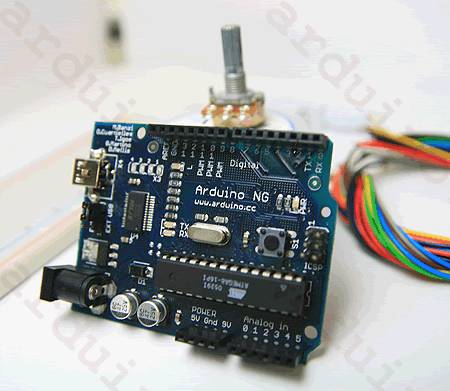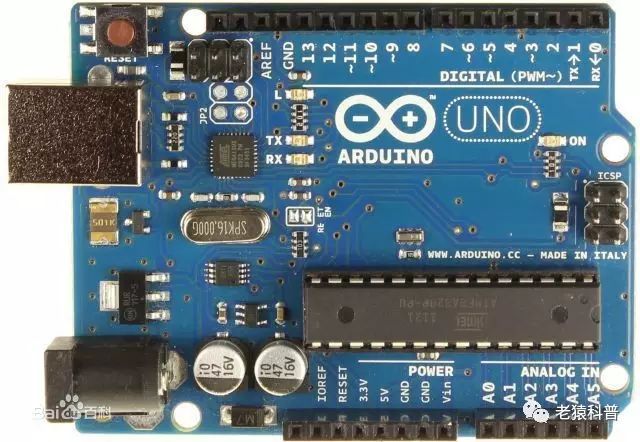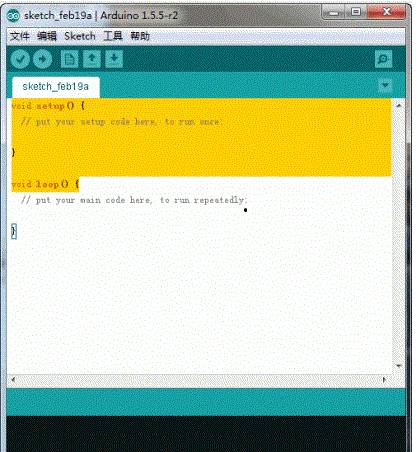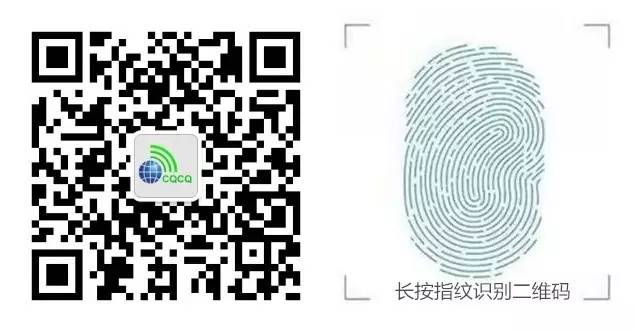▲Click the blue text above to join theinteresting andfun Ham Circle

Source: WeChat Public Platform Lao Yuan Science Popularization
1. What exactly is Arduino?
Arduino is a convenient, flexible, and easy-to-use open-source electronic prototyping platform. It includes hardware (various models of Arduino boards) and software (Arduino IDE). The hardware schematics, circuit diagrams, IDE software, and core library files of Arduino are all open source, allowing for modifications to the original designs and corresponding codes within the scope of the open-source license. The Arduino IDE is developed based on the processing IDE. It is very easy for beginners to grasp while providing sufficient flexibility. Arduino can sense the environment through various sensors and can control lights, motors, and other devices to respond to and influence the environment. The microcontroller on the board can be programmed using Arduino’s programming language, compiled into binary files, and burned into the microcontroller.
ArduinoHardware Platform
ArduinoProgramming Environment 2. What is Arduino’s Chinese name, and how should I refer to it?
China is a non-immigrant country, and obtaining a Chinese HuKou is much harder than getting a US Passport. Therefore, Arduino does not yet have a proper Chinese name in the country, and since it is in Italian, many people cannot pronounce it. Some call it “Adu no”, while others call it “Adui no”. In the past two years, the term “Er” has become popular, so some people call it “Er Zhui Yi No”, where “Zhui” is stressed and “Yi” is lightly stressed, attempting to blend the two characters into a quick pronunciation. The “No” at the end is pronounced like the English “no”. Friends who understand Italian prefer to call it “Ardino” (which means brave friend in Italian). The dict.cn dictionary translates it as “Alduino”, with different pronunciations for British and American English. It doesn’t matter which pronunciation you use as long as it does not affect communication; I prefer to call it “Adui no”, and it has never objected ^_^.
3. What can Arduino do?
Arduino is a hardware development platform that is easy to learn and widely used, forming the hardware foundation for technology maker activities. Arduino is currently one of the most popular open-source electronic platforms among makers, and it is also a selectable platform for the intelligent design challenge projects in the Haidian District and Beijing’s primary and secondary school intelligent control (microcontroller) competitions.
Back in September 2014, during the Summer Davos Forum, Li Keqiang publicly called for “mass entrepreneurship and innovation”. In the past two years, a large number of maker spaces have emerged across the country, such as Chaihuo Maker Space and Zhongguancun Maker Space, and some quality primary and secondary schools have introduced the concepts of maker education and maker spaces. Being a maker has become the dream of many teenagers, but having dreams and creativity is far from enough; we need a soft and hard platform to realize our ideas, and Arduino is currently one of the most favored open-source electronic platforms among makers.
Your digital TV, refrigerator, washing machine, microwave oven, air conditioner, air purifier, etc., are all controlled by microcontrollers, and Arduino can do all these tasks. Previously, developing microcontrollers required learning a lot of hardware knowledge, and controlling ports was quite cumbersome. However, using Arduino as a development platform simplifies the process significantly; many complex and tedious low-level controls have already been implemented by the designers of the Arduino platform, greatly lowering the entry barrier for makers, allowing even elementary school students to design and develop their own electronic creative products.
4. Who is suitable for learning Arduino?
Elementary school students, middle school students, college students, graduate students, and working professionals can all learn as long as they have an interest. College students and working professionals with strong self-learning abilities, like myself, can buy a book or find some resources online to self-learn. Learning by doing, completing a project usually means you have mastered the basics.
For elementary and middle school students, it is best to find a tutor or enroll in a class. Otherwise, it is easy to lose motivation when encountering difficulties and obstacles during the learning process. Working alone at home can also be uninteresting. A group of peers can enhance the learning experience, and collaborative learning and brainstorming can generate better ideas. Teacher guidance can improve learning efficiency and help avoid detours.
The beginner Arduino course is suitable for elementary and middle school students, focusing on learning basic microcontroller programming through Arduino smart cars, familiarizing students with commonly used sensors and their applications, laying the foundation for advanced Arduino courses.
The advanced Arduino course is suitable for: elementary school students, middle school students, and high school students. Students propose creative projects, and groups collaborate through project analysis, design, implementation, debugging, and improvement to complete electronic creative projects, cultivating students’ computational thinking and STEAM learning abilities. It can also target the intelligent design challenge projects in the intelligent control (microcontroller) competitions for primary and secondary school students in Beijing, going through project analysis, design, implementation, debugging, and improvement steps to skillfully handle intelligent design challenge projects; it can also target the on-site programming projects in the same competitions, going through similar steps to prepare for on-site programming projects.
5. What is the benefit of learning Arduino?
If students undergo rigorous engineering training and complete a small project, this process will undoubtedly benefit them for a lifetime, far more than simply excelling at a particular exam subject. Many graduates and entrepreneurs have provided feedback that working on technology projects in middle school greatly helped them, which strengthens my confidence and determination to continue promoting technology education.
In the short term, if students master Arduino, they can participate in on-site programming projects and intelligent design challenge projects in the intelligent control (microcontroller) competitions for primary and secondary school students in Beijing, as well as relevant projects in the Beijing Youth Robot Competition and the Beijing Youth Science and Technology Innovation Competition. Winning awards in these competitions can qualify students as science-specialized students. Even if the specialized student designation is canceled, it will still be a highlight in their resumes and a plus for university admissions and applications to top universities abroad.
6. Where can primary and secondary school students learn Arduino?
Many primary and secondary schools offer elective courses in Arduino, making it the most hassle-free option, usually free or with a nominal fee. The computers and equipment are provided by the school, and public school science teachers typically volunteer their time, with pay comparable to that of hourly workers ^_^.
If the child’s school does not offer classes, then the parents can teach them. There are successful cases of this, but many children are rebellious during their teenage years and are less likely to listen to their parents. I have encountered rebellious children and have tried asking colleagues to teach them.
If none of the above options work, then find a reliable tutoring class for the child. Spending some money on the child’s technology education is the most genuine form of quality education, and who knows, you might end up with a scientist or engineer in your home.
Amateur RadioWeChat ID:ham_cn
Add a friend – Search number:ham_cn
Or search for the WeChat public account: Amateur Radio
Cooperation, submissionsplease add the editor’s WeChat:78329708,
Or call:18959213416 .


